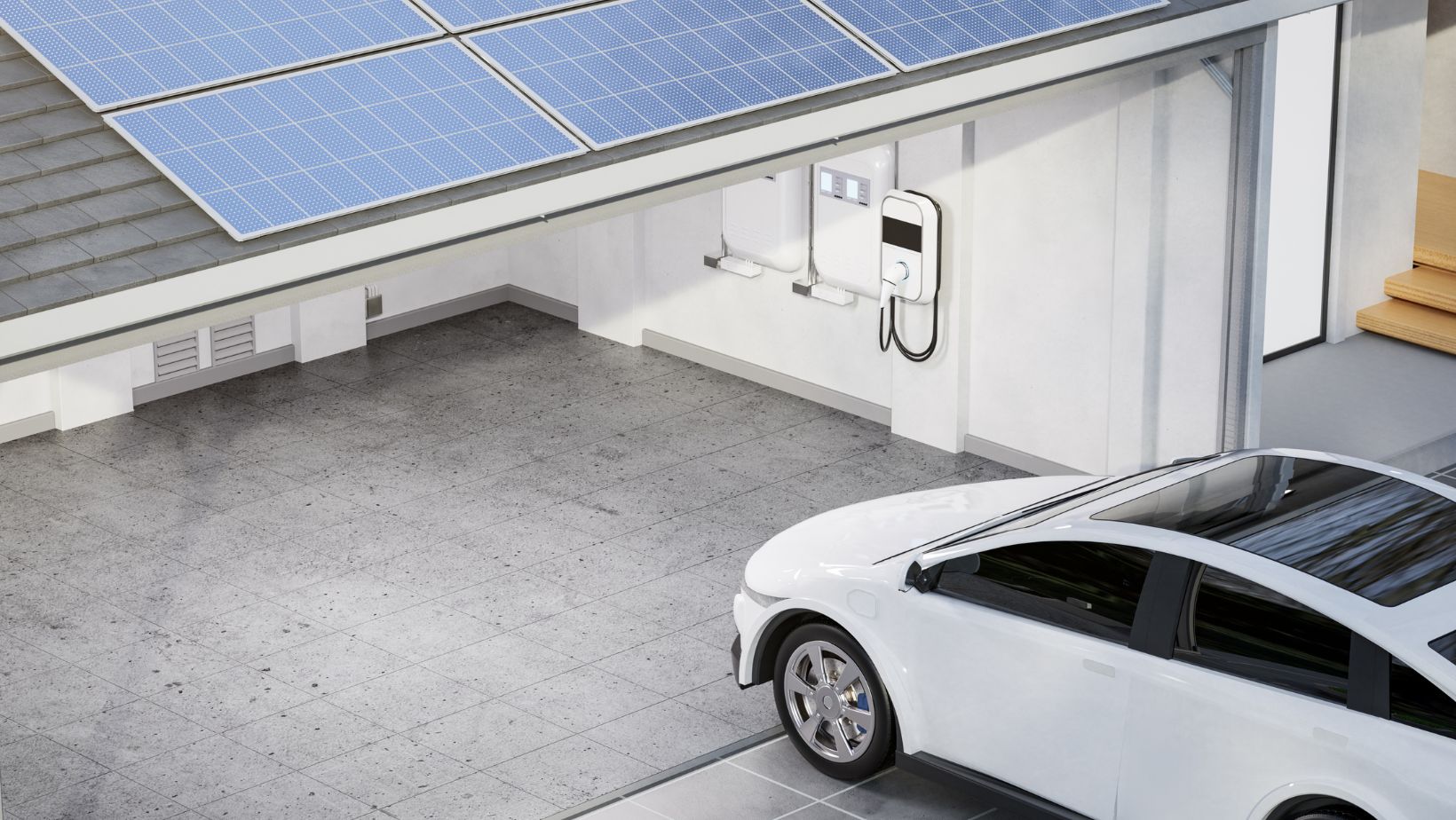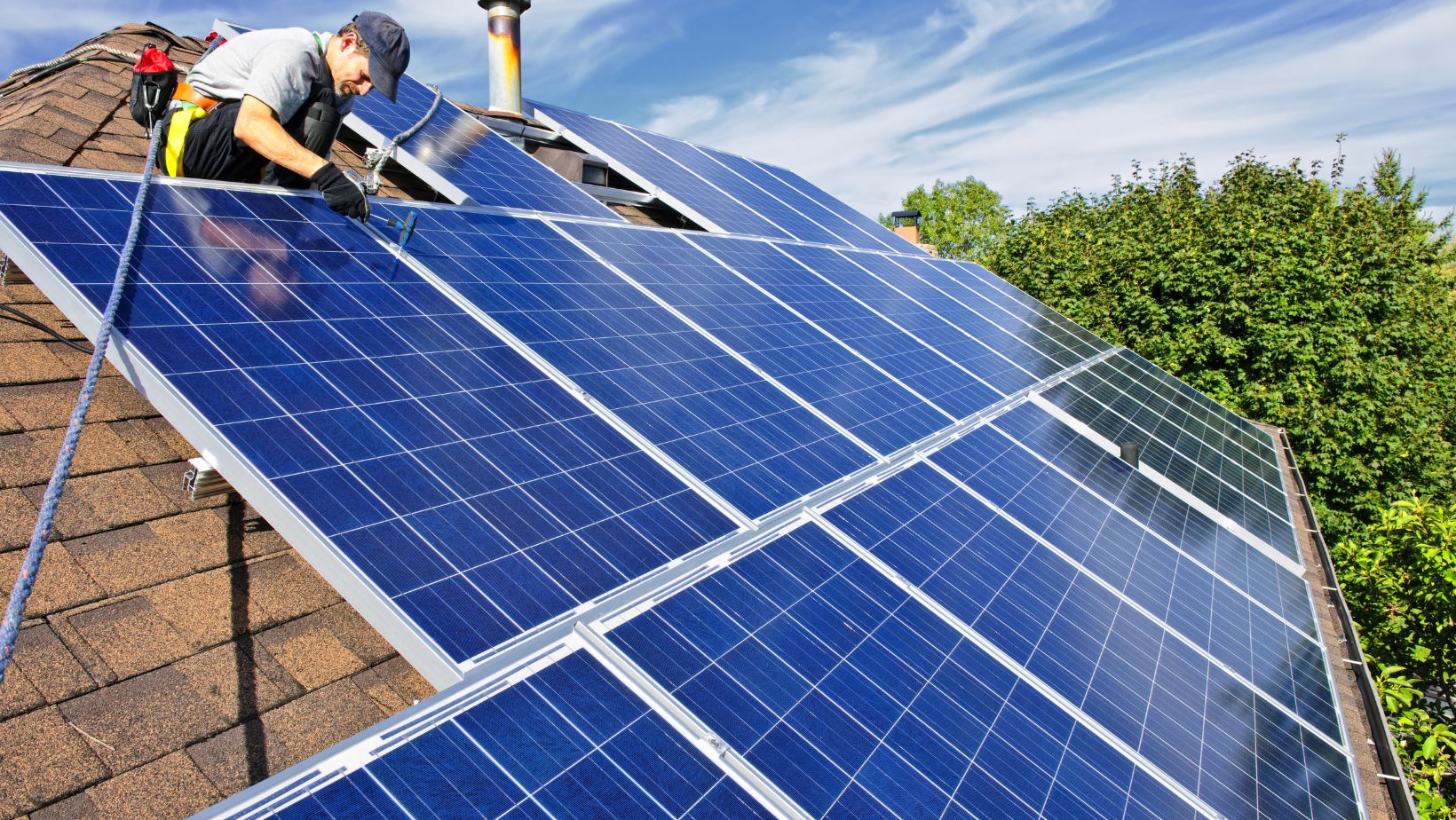Table of Contents
ToggleSolar Panels for Garage
Looking to harness the power of the sun and make your garage more eco-friendly? Solar panels for garages are a smart investment that not only helps reduce your carbon footprint but also saves you money in the long run. With advancements in technology and decreasing costs, solar panels have become an accessible option for homeowners looking to generate clean energy. There are also federal tax credits available. All a homeowner needs is a good tax calculator and qualifying solar installation to drive the costs down significantly.
Installing solar panels on your garage roof allows you to take advantage of the available space while maximizing energy production. By converting sunlight into electricity, these panels can power your garage appliances, lighting, and even charge electric vehicles. Additionally, any excess energy generated can be fed back into the grid, potentially earning you credits or reducing your utility bills.
Determining the Ideal Placement for Solar Panels on your Garage Roof
When it comes to installing solar panels on your garage roof, finding the ideal placement is crucial to ensure maximum energy efficiency. Here are a few key factors to consider when determining where to position your solar panels:
- Sun Exposure: The primary goal of solar panels is to harness sunlight and convert it into electricity. Therefore, it’s essential to choose a location with unobstructed access to direct sunlight throughout the day. Evaluate your garage’s surroundings and identify any potential shading obstacles such as tall trees, neighboring buildings, or nearby structures that may cast shadows on your roof.
- Roof Orientation: The orientation of your garage roof plays a vital role in optimizing solar panel performance. In North America, south-facing roofs typically receive the most sun exposure over the course of a day. However, east or west-facing roofs can also be viable options depending on their tilt angle and available sunlight in your area.
- Roof Tilt Angle: The tilt angle of your garage roof impacts how efficiently solar panels capture sunlight at different times of the year. To maximize energy production, many experts recommend setting the tilt angle equal to the latitude of your location (e.g., 35 degrees for locations near 35° latitude). However, this is not always practical for garages with fixed roof angles. In such cases, opting for a compromise tilt angle that balances seasonal variations can still yield satisfactory results.
By carefully considering these factors, you can determine the ideal placement for solar panels on your garage roof. Remember to consult with a qualified solar installer or professional to assess your specific situation and ensure a successful installation that maximizes energy production while adhering to safety standards and local regulations.

Steps to Install Solar Panels on Your Garage Roof
Installing solar panels on your garage roof is a great way to harness renewable energy and reduce your carbon footprint. In this section, I’ll guide you through the steps to install solar panels on your garage roof, helping you make an informed decision and embark on this eco-friendly journey.
- Assess the Suitability of Your Garage Roof: Before diving into the installation process, it’s crucial to ensure that your garage roof is suitable for solar panel installation. Consider the following factors:
- Orientation: Ideally, your garage roof should face south or have a south-facing aspect to maximize sun exposure throughout the day.
- Structural Integrity: Ensure that your garage roof is structurally sound and can support the weight of solar panels. Consult with a professional if necessary.
- Shade Analysis: Evaluate any potential shading issues that may obstruct sunlight from reaching the panels. Trim overhanging trees or consider alternative mounting options if shading is a concern.
- Determine Your Energy Needs: To determine how many solar panels you’ll need for your garage, calculate your energy requirements. Take into account factors such as average monthly electricity consumption, available roof space, and desired level of energy independence.
- Choose Solar Panel System Components: Select high-quality solar panels, inverters, and racking systems that suit both your budget and energy needs. Consider factors like efficiency ratings, warranties offered by manufacturers, and compatibility between components.
- Obtain Permits and Approvals: Check with local authorities regarding permits required for installing solar panels on residential properties. Familiarize yourself with any regulations or guidelines specific to your area.
- Engage Professional Installers or DIY Installation: Decide whether you want to hire professional installers or undertake a DIY installation project based on your skills and comfort level with electrical work.
In conclusion, installing solar panels on your garage roof is a sustainable choice that can help you save money on electricity bills while reducing your environmental impact. Take the first step towards a greener future today!





